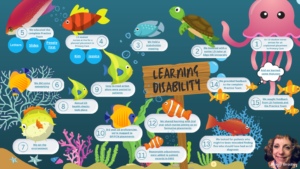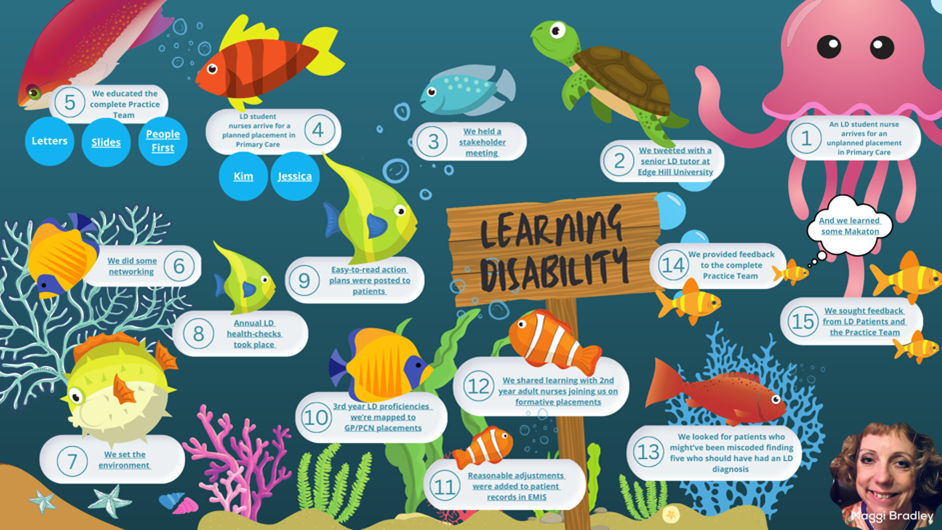Have you ever had that sinking feeling that you’re not doing all you can to help a patient in your care?
Working in Primary Care is never short of variety; one moment you’re assessing an Asthma patient who’s experienced an exacerbation, the next you’re undertaking a cytology exam. As Primary Care Nurses, we have to be confident that we’re up to date with current guidelines, we have to understand best practice, we have to be prepared and able to handle a variety of emotions, concerns and questions so that when that next patient walks through the door, we’re well equipped to provide the high-quality service they deserve and expect. It’s not easy but it’s what we’re trained to do.
An additional challenge, which perhaps we’re not so well-trained for, is when that patient also has a learning disability (LD).
The experience of one such patient made me think that I wasn’t doing enough. Laura (not her real name) is 32 and has complex learning difficulties, making it difficult for her to communicate. Her parents, who also care for her, try their best to be her voice. As is the case with every patient over 14 years with a learning disability, a review is conducted annually, at the GP Practice, to help spot any potential problems before they become an issue. When I met Laura, I realised that we were going through a process, but she didn’t really understand what was happening and why. This bothered me!
New Ideas and Ways of Working
When I was offered the opportunity to take a 3rd year student nurse on placement, I wondered if perhaps we could come to a mutually beneficial solution. I asked if I could have a student who was specialising in working with LD patients. I could offer the hands-on experience they needed to complete their degree, while Laura and my other LD patients could benefit from their specific expertise. This was agreed.
Arriving from university, full of enthusiasm, knowledge and up-to-date thinking, my student immediately set to work examining every element of the way we interact with our LD patients. What did we send out when patients were invited to a review? What and how did we explain what would happen during the review? How was the consultation room set up? What materials were being used to help the patient understand what was being discussed? What reasonable adjustments were being identified and recorded so that we could prepare for improved contact with this patient?
The main learning here is that patients with a learning disability can be engaged in the annual review process, and any other care interaction, if we, and that means everyone in the Practice, open up to communicating differently.
So, what do we do differently now?
- Our invitation letters include photos of the people the patient will meet during the review, and simple Easy Read diagrams of what will happen.
- We have reevaluated the environments that the patient will experience, ensuring that we address the particular needs of the patient we are seeing. This may include, for example, removing barriers and unnecessary items.
- We ensure that we speak to the patient directly, using specially designed simple diagrams to explain what we are doing and why.
- We actively look for necessary and helpful reasonable adjustments, such as the need for longer processing times and sensory and/or visual needs, and we record these on EMIS in such a way that they pop up every time the patient’s records are accessed.
- We trained all our staff, clinical and non-clinical (including The Reception Team) on the importance of matching the reasonable adjustments that had been identified, and how to communicate more effectively with LD patients. This included simple training in Makaton.
- We follow up after review meetings by sending out an Easy Read recap of what was discussed and any next steps.
- The process for handling patients with a learning disability has been documented in a suitably engaging and ‘different’ way (The Aquarium), showing that we all engage better when we think differently!
My experience in taking a student nurse on placement couldn’t have gone better. Thanks to her dedication and expertise we have a professional, up-to-date, robust and continually evolving process to improve the experience of Primary Care for those patients with a learning disability. Conversely, she had a meaningful and impactful experience of working in Primary Care. I am delighted to add that she went on to select the Primary Care setting as her career choice and is now working in this field. The ‘Aquarium’ is now a living document which successive LD students are contributing to, as we further improve LD access.
I encourage everyone to learn from my experience – student nurses on placement can be a fantastic resource if we empower them to bring their knowledge and experience to bear in our setting. And as for LD patients, we’ve had some really fantastic feedback from patients, their families, and carers. By thinking differently we’ve made a real difference to the lives of our patients.

Please contact maggi.bradley@nhs.net for a full version of ‘The Aquarium’ or if you have any questions.
Maggi Bradley, QN, RGN, BSc Specialist Practitioner
General Practice Nurse
Clinical Nurse Lead, Sefton Training Hub
